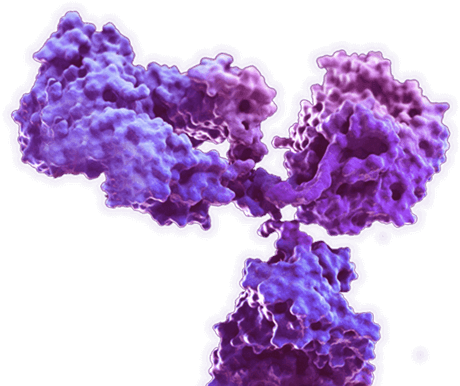AibGenesis™ Mouse Anti-Bbs4 Antibody (CBMOAB-02196FYA)
Cat: CBMOAB-02196FYA

Certificate of Analysis Lookup
To download a Certificate of Analysis, please enter a lot number in the search box below. Note: Certificate of Analysis not available for kit components.
Lot Number
To download a Certificate of Analysis, please enter a lot number in the search box below. Note: Certificate of Analysis not available for kit components.
Lot Number
- Product List
- Specifications
- Application Information
- Target
| Sub Cat | Clonality | Species Reactivity | Application | Clone | Conjugate | Size | |
| CBMOAB-02196FYA | Monoclonal | Fruit fly (Drosophila melanogaster), Cattle (Bos taurus), Chimpanzee (Pan troglodytes), Marmoset, Rhesus (Macaca mulatta), Zebrafish (Danio rerio) | WB, ELISA | MO02196FYA | 100 µg | ||
| CBMOAB-36812FYA | Monoclonal | Rhesus (Macaca mulatta) | WB, ELISA | MO36812FYA | 100 µg | ||
| CBMOAB-67498FYA | Monoclonal | Zebrafish (Danio rerio) | WB, ELISA | MO67498FYA | 100 µg | ||
| MO-AB-07984R | Monoclonal | Cattle (Bos taurus) | WB, ELISA | MO07984R | 100 µg | ||
| MO-AB-11631W | Monoclonal | Chimpanzee (Pan troglodytes) | WB, ELISA | MO11631W | 100 µg | ||
| MO-AB-51763W | Monoclonal | Marmoset | WB, ELISA | MO51763W | 100 µg |
Specifications
| Host species | Mouse (Mus musculus) |
| Species Reactivity | Fruit fly (Drosophila melanogaster), Cattle (Bos taurus), Chimpanzee (Pan troglodytes), Marmoset, Rhesus (Macaca mulatta), Zebrafish (Danio rerio) |
| Clone | MO02196FYA |
| Specificity | This antibody binds to fruit fly Bbs4. |
| Format | Liquid or Lyophilized |
| Storage | Store at 4°C: short-term (1-2weeks) Store at -20°C: long-term and future use |
| Purity | > 90% was determined by SDS-PAGE |
| Purification | Purified with Protein A or G affinity chromatography |
| Cellular Localization | Plasma Membrane; Cytoskeleton; Other locations |
Application Information
| Application | WB, ELISA |
| Application Notes | ELISA: 1:1000-1:3000 Other applications are to be developed. The optimal dilution should be determined by the end user. |
Target
| Introduction | This gene is a member of the Bardet-Biedl syndrome (BBS) gene family. Bardet-Biedl syndrome is an autosomal recessive disorder characterized by severe pigmentary retinopathy, obesity, polydactyly, renal malformation and cognitive disability. The proteins encoded by BBS gene family members are structurally diverse. The similar phenotypes exhibited by mutations in BBS gene family members are likely due to the protein's shared roles in cilia formation and function. Many BBS proteins localize to the basal bodies, ciliary axonemes, and pericentriolar regions of cells. BBS proteins may also be involved in intracellular trafficking via microtubule-related transport. The protein encoded by this gene has sequence similarity to O-linked N-acetylglucosamine (O-GlcNAc) transferases in plants and archaebacteria and in human forms a multi-protein "BBSome" complex with seven other BBS proteins. Alternate splicing results in multiple transcript variants. (From NCBI) |
| Product Overview | Mouse Anti-D. melanogaster Bbs4 Antibody is a mouse antibody against Bbs4. It can be used for Bbs4 detection in Western Blot, Enzyme-Linked Immunosorbent Assay. |
| Alternative Names | Bardet-Biedl syndrome 4 protein homolog; BBS4 |
| UniProt ID | A1Z8E9 |
| Protein Refseq | The length of the protein is 486 amino acids long. The sequence is show below: MYEPGTEQINCNGRLIELPTLEVVRPAPKMPSDANIDWLLHIYFTRREFTRCRRLIERELNRHLNPEYLYFVQGLIDREEGNHIEALRHLQKSAELNPRNIETYKEIGRTLYIMGRFSQALGVFREAEQRSSRQDHEIYHYLGELLYRAATTQSQKDVASQQQDEARTYFELAVQSGRKLESYVRLAELYRKDKQYQKAIEILENCLHLTPENSEVLIEISVLYLKINETQKAHDRLAEVVSIERKCSPKGLLAFGAILQSRNDIDGALSKYSQIANAEPEIAELWNNIGLCFFKKQKFIVAISSLRKSVWLSPLNYNALYNLSLIYIASEQYASAFHTLAAAINLRKDNAECYMLLGLCLRKLDDMENAFVALERASSMATGQQGAGRNPLVVLNFALFCYETGRLALSTEQYNRFMSQAQDLLLPTEYKFQATKLKSLLRISNQGNGILLDSADMGESDLGHNRATELLPDELPLEVNAVVSQN. |
For Research Use Only | Not For Clinical Use.
Online Inquiry

